Sento, slums & the origins of Tokyo today
Join me for an urbanist walk through the birth and life of a Tokyo neighborhood
Now that I have a few hundred subscribers in Tokyo, I want to start regularly running a historical walking tour that loosely follows the old Nakasendo highway from my neighborhood of Sengoku to Inari-yu, the historic bathhouse where my organization created a new community space at Inari-yu Nagaya.
If you are interested in how Tokyo emerged over the 20th century, this walk draws on my background in urban studies, the deep local research I’ve done for the Inari-yu project, and the personal attachments I’ve made to my neighborhood. I like to tell a macro narrative about the organic processes that shaped the city as it evolved from Edo into Tokyo, and the particular role of the bathhouse as a basic unit of 20th-century Tokyo’s urbanism, anchoring local lifeworlds about 150 meters in radius. I first did this walk in 2023 with Jordan Sand, whose work on Meiji-era slums in the area helped to fill in some of the missing pieces of the story. The resulting tour explains the relationship between sento, residential spaces, and the ecosystem of neighborhood commons and businesses.
While much of this local granularity has disappeared, we can still find traces of it. Even in its absence, the imprint on the urban topography is there if you know where to look. In my neighborhood of Sengoku, we’ll pass by my favorite kakuuchi, grocer, fishmonger, and rice shop that has been in business since the 1730s. Further along, Sugamo’s lively stretch of the Nakasendo is a great place to consider the historical flows of people and commodities into and out of the city. And out past Koshinzuka, we can see how a new industrial metropolis arose in a few short decades in the early 20th century and swept away what was left of Edo.
We’ll be visiting the sites of Meiji-era slums and digging into Nakasendo shop lists, bathhouse family trees, and other materials gathered from archives and interviews, but you don’t need to be a history nerd to understand. The whole tour is about 4 kilometers and takes a couple of hours. Best of all, you can take a bath at Inari-yu afterwards, and grab a drink at our community space at Inari-yu Nagaya.
So here’s the deal: I run this walk from time to time on Saturdays, depending on my schedule, for groups of six to eight people, for a participation fee of ¥3,000. If you’re interested in coming on a future walk, fill out this Google Form here. You can email me if you are interested in arranging a private tour on another day.
I am also developing a longer (~20,000 step) walk across eastern Tokyo and the Yoyogi-Aoyama-Akasaka area that traces the history of the firebombing, postwar black markets, and American occupation. Email me if you’re interested.



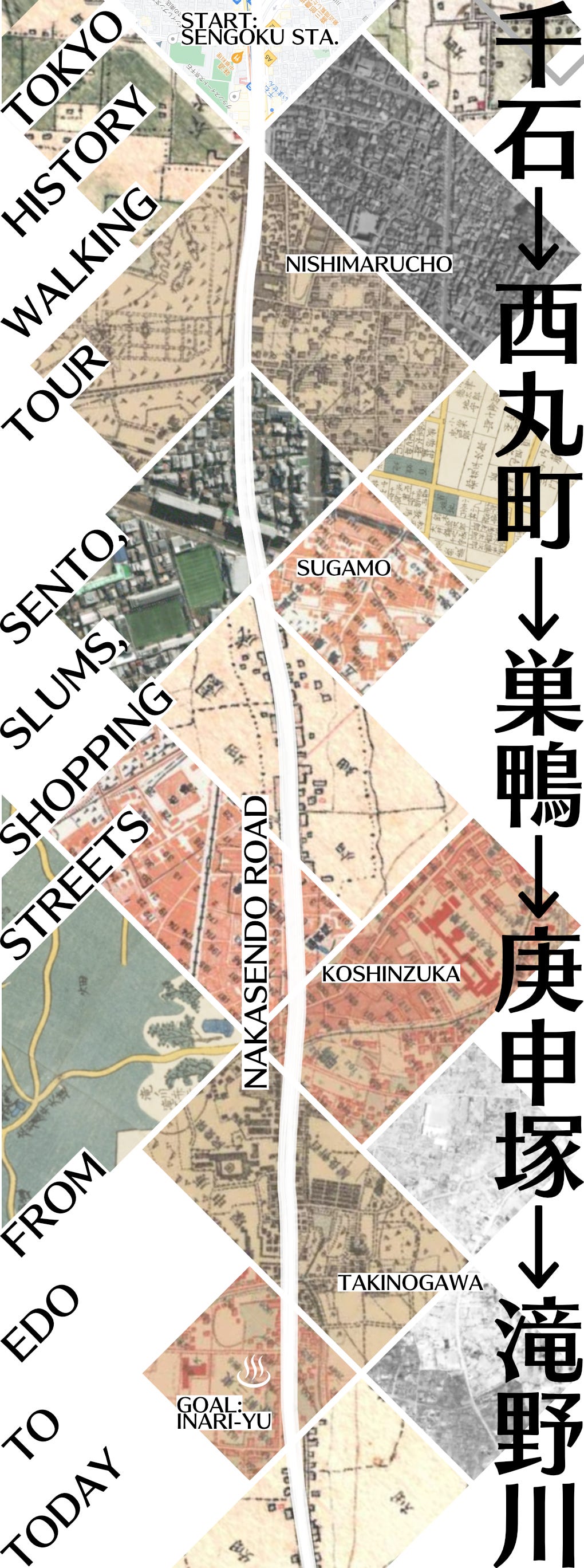
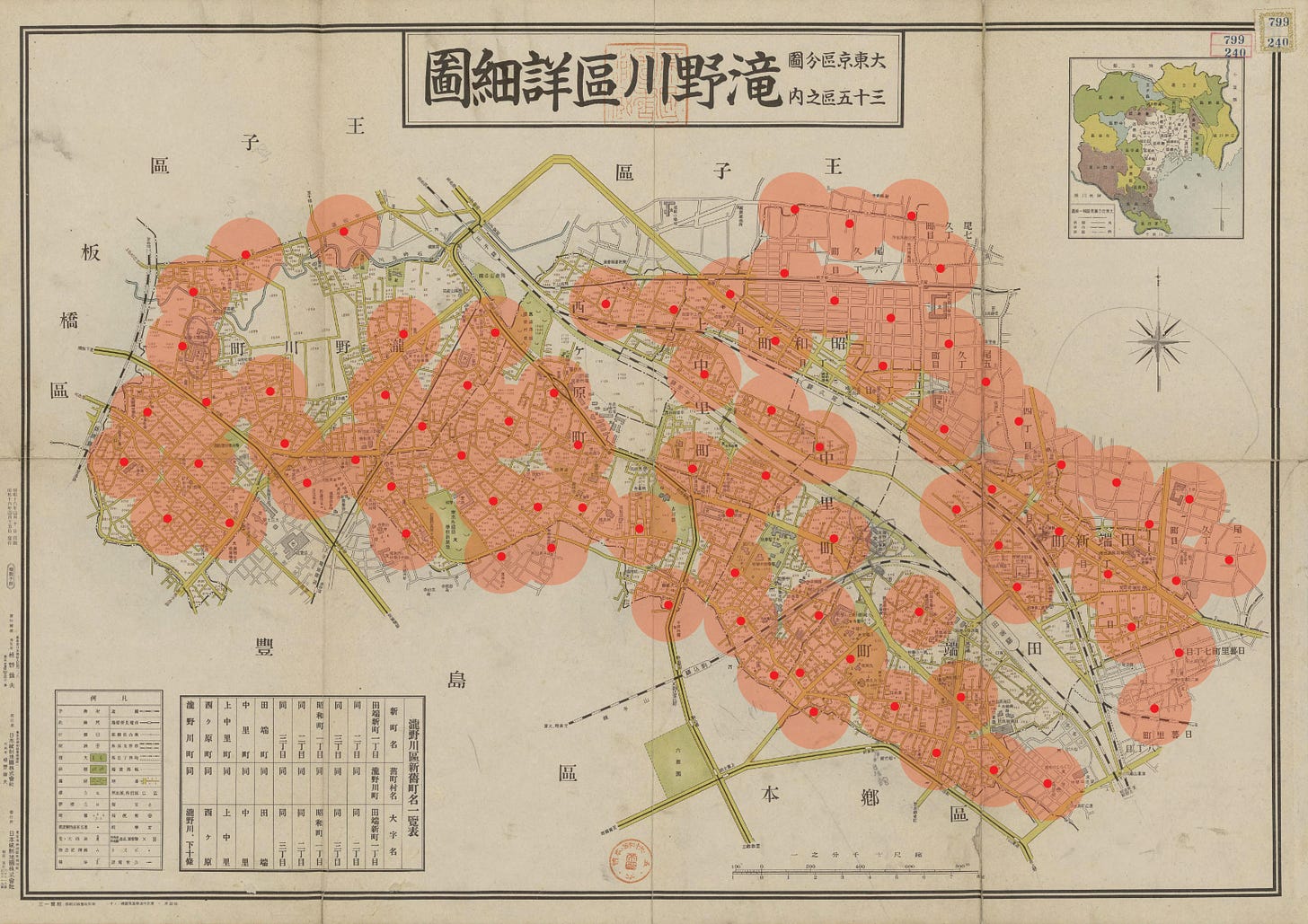
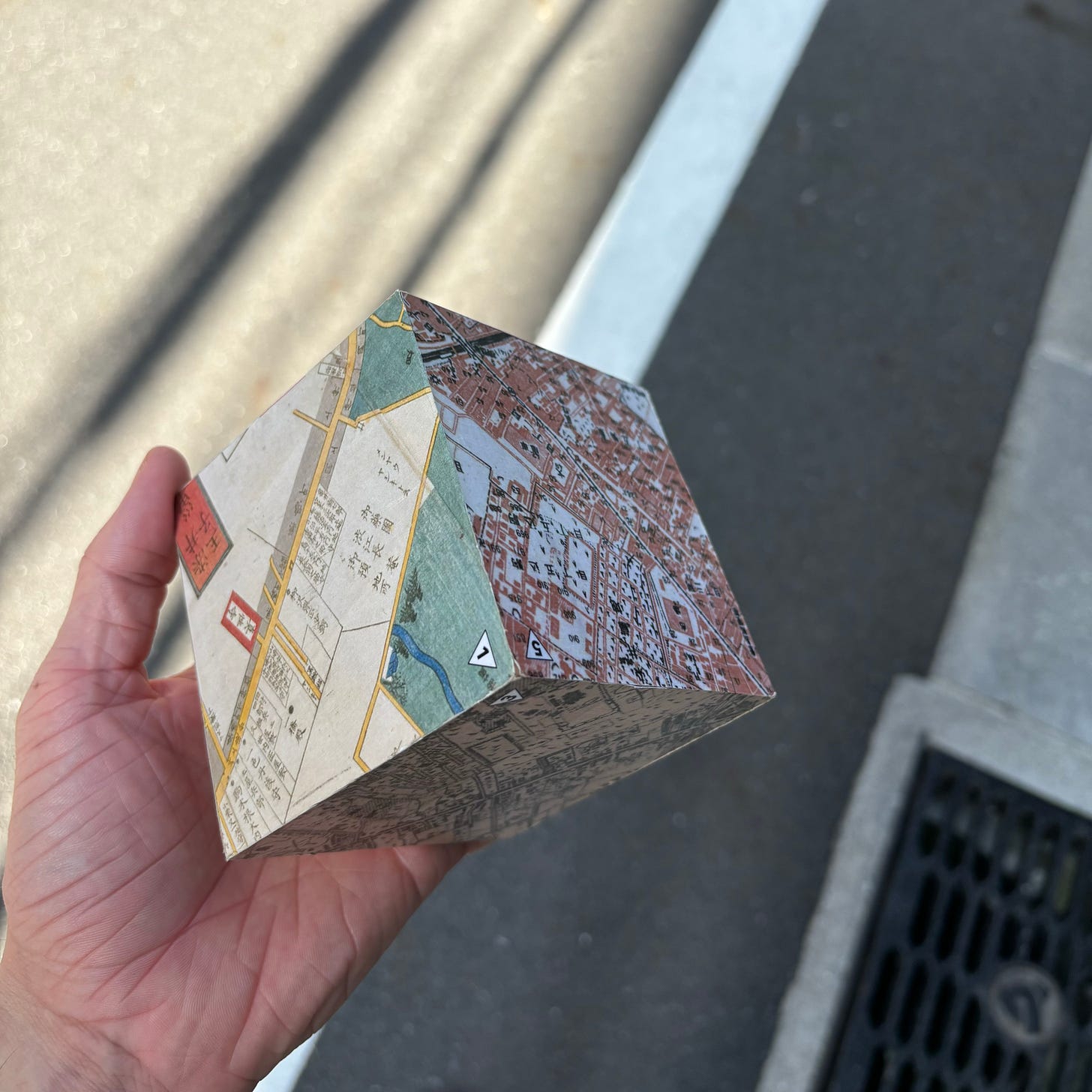
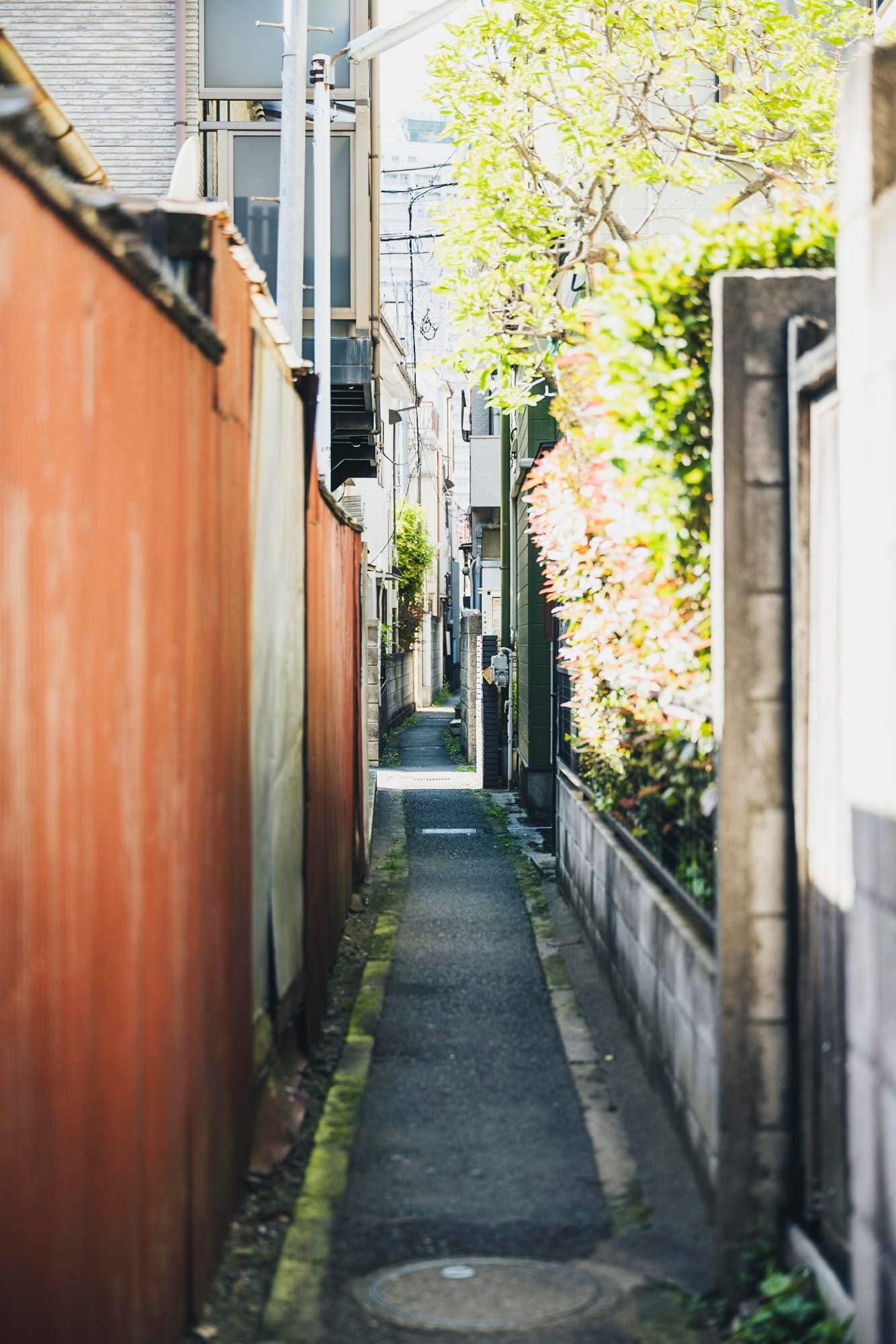
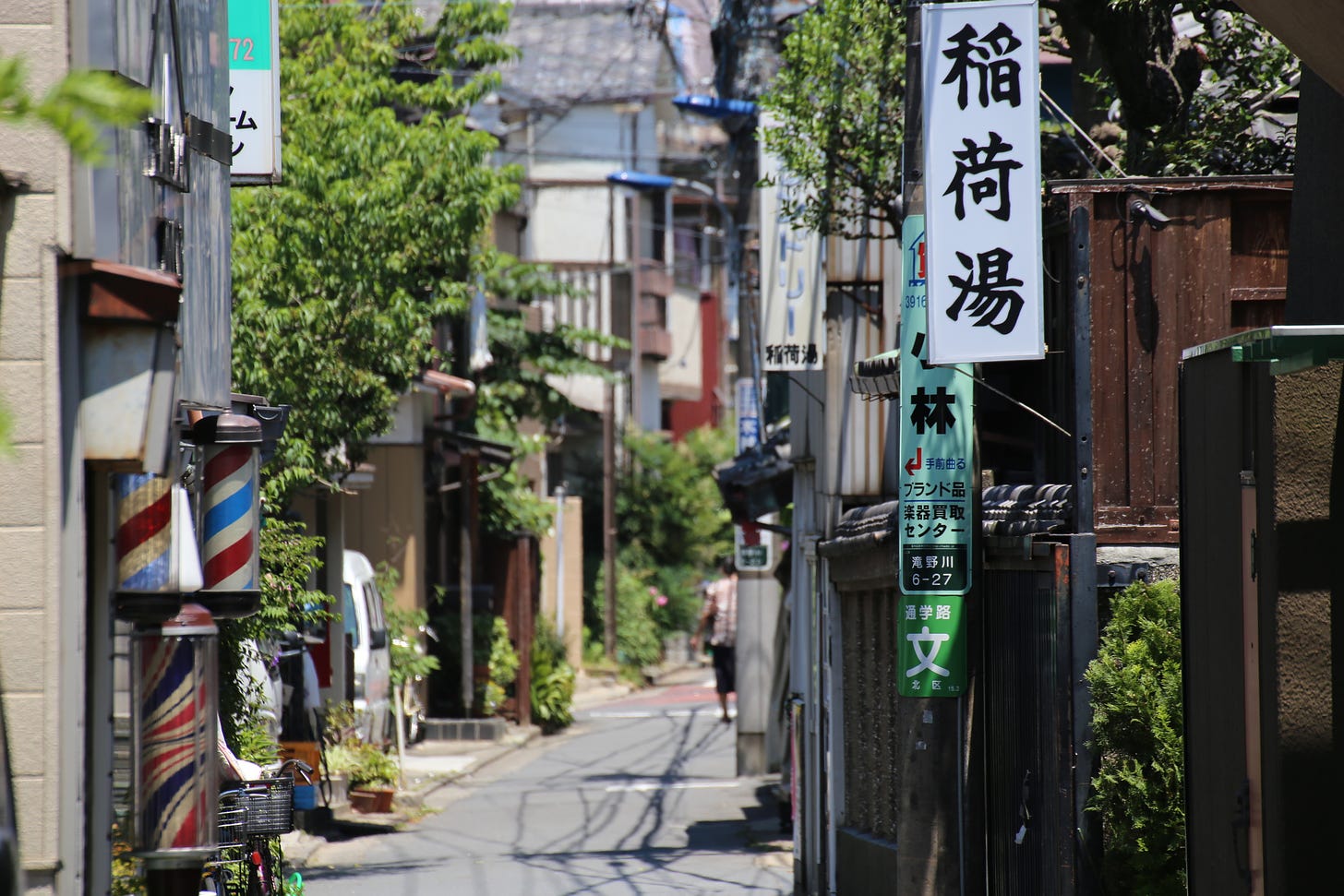
Oh this is awesome! Not able to attend this Saturday but would love to join a future date. Thanks for this offering!
Next time I’m in Tokyo, I would love to take your tour